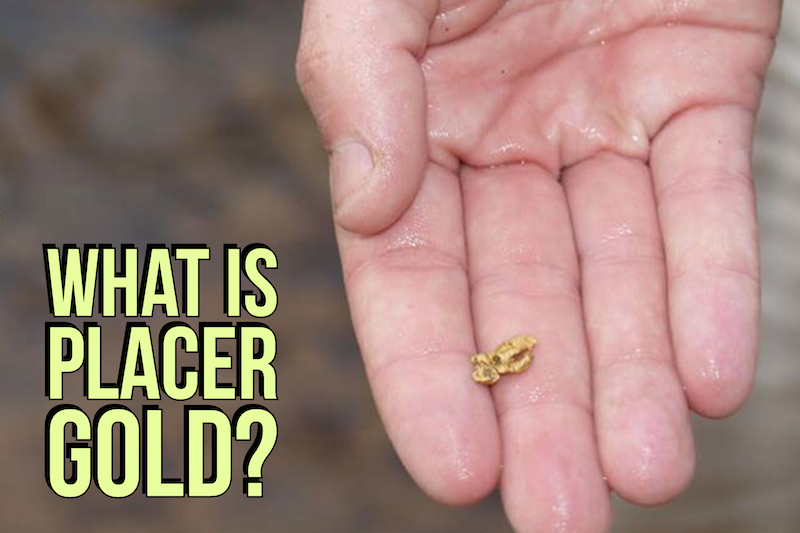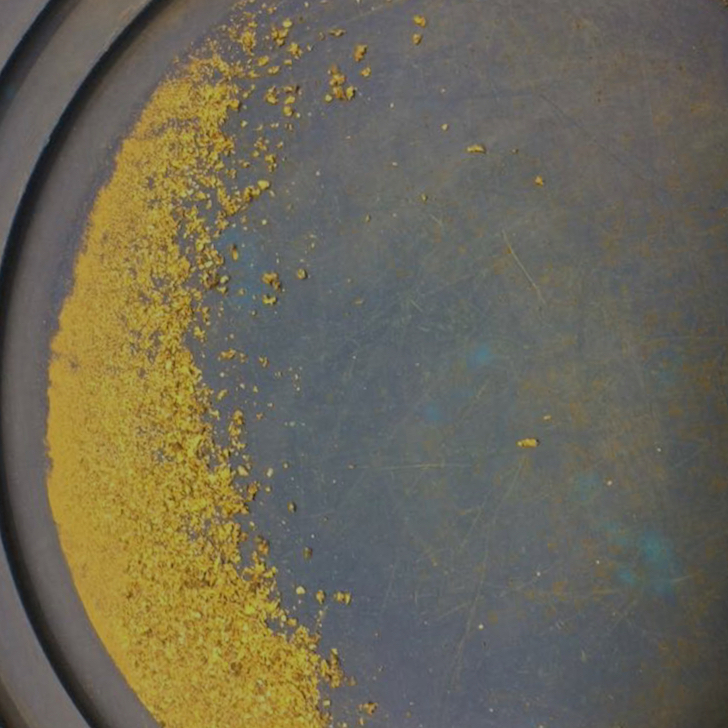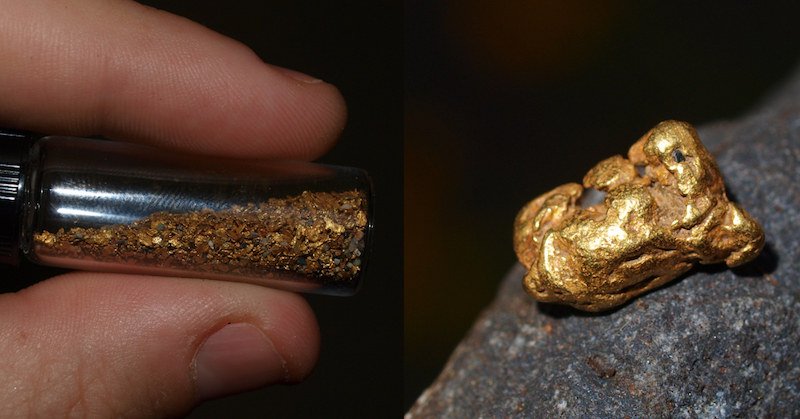
Most of the gold mined in California and in rivers across the United States during the height of the gold rush was placer gold. During the 1840s through 1860s gold mining in the United States focused on rivers where miners recovered lose gold nuggets from river beds using simple mining tools such as sluice boxes.
Placers were primarily worked for the first few years until the richest deposits were depleted from the riverbeds. When the richer placers began to play out, miners would venture up into the hills and look for the hard rock sources.
Today placer gold in rivers is very limited compared to what they once were. It would be very difficult for a modern-day recreational miner to understand how placer deposits could cause an unprecedented gold rush like the Californian gold rush in 1848. Today, a hard days of digging on a rich gold-bearing river might produce a gram or two of gold, a far cry from what the old-timers could find.
What is Placer Gold?
Placer gold is a term that refers to gold found in a secondary deposit. Usually gold occurs in lode deposits. However, the weathering of the hard rock and action of rivers and even glaciers in some places have carried the fine gold nuggets and particles and deposited them somewhere else away from the original lode deposit. Usually, these new deposit is somewhere near the surface and in most cases along river beds or in creeks. The gold found in these secondary deposits is what is termed as placer gold.

Where to Find Placer Gold
Placer gold deposits are usually not far off from where lode gold deposits are. The gold in hard rock is released during the weathering process and then it carried off by glaciers or running water (streams, rivers, flood water) to someplace where it is deposited and concentrated in a placer deposit.
Because gold is relatively heavy, it is generally not carried far from the source. This means that prospecting rivers and waterways around areas where lode deposit has been found can result in the discovery of gold. In addition, ancient river channels in places with gold-bearing rocks and flooding outwash in such places may also contain placer gold.

The most common places to find placer gold is on the river beds. Usually when a gold-bearing vain get exposed due to weathering of the top rocks and other forces of nature the gold in the vain doesn’t move far from the source. However, when a large storm hits the area causing rivers and streams to flood, the runoff water run faster carrying with it lose gold particles and nuggets into the streams and rivers.
Sometimes a river or stream flowing over a gold vein may eventually cut deep enough to erode the vain and carry off lose gold particles and nuggets downstream. Gold being heavy than all the other materials being carried downstream exerts a downward force on the water and quickly settles on the riverbed once the water slows down. This creates a rich placer gold deposit on the river bed.
Also Read: Heavy Snow and Rain Help Gold Prospectors
Types of Placer Concentrations
When rainwater sweeps gold particles from a gold vain some distance off the river into the river, not all the gold is deposited on the river bed. Some are deposited on the river banks while some go all the way into the river. This action results in a number of different placer gold deposits. A residual placer deposit is a placer gold deposit where the gold that broke loose from the vein get deposited just next to the main vain. This happens where there is not enough runoff water or glacier to move the gold materials into a river. Alluvial placers deposits consist of lose gold materials that have been moved away from the main vain but did not get into a water body (creek, river, lake). Bench placer deposits are found in old river beds which are now way above the current riverbed. Finally, the river bed placer deposit is the most commonly mined place gold on the bed of rivers and creeks.

Placer gold can range in size from tiny particles all the way up to huge gold nuggets.
How to Mine for Placer Gold
The first and most important step in mining placer gold is to find the deposit. If you find a placer gold deposit with considerable amounts of gold worth mining, then you need to find out if the area is free so that you can stake a claim or if someone already owns the claim so that you can lease the claim. This is important so that you don’t run into legal problems relating to mineral trespass.
Once you have the legal authority to mine place gold in a given area the next important step to take is to decide which mining method you will use to mine the gold. Depending on the type of placer gold deposit you are working on you may choose to use a gold pan, a sluice box, a rocker, a highbanker or a drywasher. These methods are perfect for a simple hand mining operation.
Once you have selected the mining methods, the next steps are to gather all the materials you need to start mining. Different mining methods will require different equipment and materials. You have to have the right tools to mine. Once you acquire all the items you need now go to work.
What You Need To Mine Placer Gold
The following are the important items you need to start mining placer gold:
These are the actual tools you will need to extract gold from all the other materials where it is found. The choice of a mining tool depends on the mining methods to be used. The most common tools are gold pans and sluice boxes.
These two are important in loosening to materials that contain gold and scooping the material for transfer into your mining instruments. Sometimes gold deposited may be found in the dry river bed or on river banks. You need to loosen the soils first before scoping it and transferring it into a sluice box or whatever equipment you are using to process the gold
Most of the small-scale mining methods such as sluicing, dredging and even panning use water to separate gold from the dirt. You, therefore, will need a source of water and in addition pipes and other means to transfer the water into your sluice.
You will need a bag to keep your find, some final washing tools and buckets to carry your concentrates. Most prospectors will collect their black sand concentrates and bring them home with them for final separation of gold from the black sands.
Next: Public Land Gold Mining – Lots of Open Areas!







